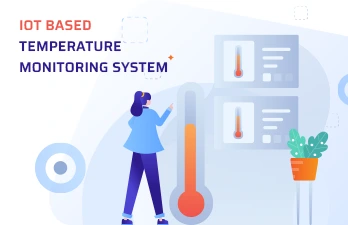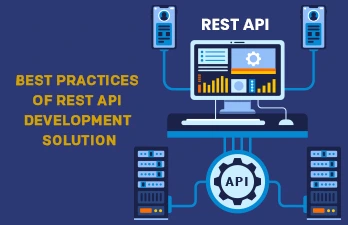It is a known fact that any Industry changes over time, and the automotive Industry too is no exception to this. Increase in fuel efficiency, usage of lightweight but strong materials and the usage and implementation of better safety precautions are some of the many things that have happened with the car industry over the years. The next set of innovations are expected to be self-driving vehicles, better comfort and faster yet safer travel. Many individual components are part of such mechanisms, and Internet of Things(IoT) technology is one of the core components. IoT technology allows physical devices or hardware to be connected through the internet without human intervention and share important data between them. Advanced fleet management, vehicle to vehicle communication and data sharing between the user and the vehicle are thus becoming possible with this technology, and IoT in automotive industry is all set to make our travels safer, efficient and more fun than it’s ever been.
Role of IoT in automotive industry
The IoT industry in itself is very complicated and this is a given to handle the complex tasks it is tasked for. IoT uses many things to do its job in the automotive Industry. The latest sensors are used to detect and track things like other cars. Mobile apps and cloud services are used for control and data storage. Artificial intelligence and machine learning is used for calculating complex real time calculations of importance, and generating detailed reports that may lead to further increase in the efficiency of a car. IoT automotive Industry applications are a big market, and GlobalNewswire has reported that the market will grow at a CAGR of 16.4% from 2019 to 2025. The market capital is expected to be valued around $541.73 billion by 2025.
Top 5 Applications that use IoT technology in the automotive industry
Without any delay, we shall discuss the top applications that use automotive IoT technology and are making headlines in the automotive industry. With the improvement in the technological aspect, these are expected to become commonplace in the coming years within the general public.
In vehicle infotainment
In Vehicle infotainment applications provide all details about a user’s vehicle to the user whenever they want to access such information. They can also generate reports for the user about their car’s performance, average vehicle health and other similar parameters. Google and Apple are already collaborating to develop such applications. Google Maps is the most widely used vehicle infotainment app used for navigation around the world. The google assistant and Apple carplay are other examples of such automotive IoT apps, and these are already available on the internet to be used with any vehicles.
Cellular vehicle to everything

Cellular Vehicle to Everything(CV2X) is another IoT automotive Industry application that aims to connect everything electronic to the user’s vehicle via the Internet. These applications handle more than just infotainment, and are responsible for device to device communication that handle data transfer like vehicle to vehicle(V2V), Vehicle to pedestrian(V2P) and Vehicle to Infrastructure(V2I) communications. This brings collision avoidance, pedestrian alerts and priority treatments between vehicles based on different situations. Cloud services can access this type of application and can help in real time reporting and routing of traffic in various situations.
Real time telematics

Real time telematics applications are now possible because of the extensive development in the field of Internet of Things technology. While telematics has already become mainstream, IoT integration takes the performance of such services to a new height. IoT integrated Vehicle telematics help monitor the location, movement, status and behaviour of Individual Vehicles with a fleet of vehicles. Remote vehicle control of speed and other vehicle parameters, Turn by turn navigation and a degree of control over comfort is possible through these apps. When automotive IoT and Telematics come together connectivity is enhanced between electronics, software and hardware related to all parts of the automotive drive experience.
Advanced fleet management

IoT is incredibly helpful if one wants to develop an advanced fleet management system, as it has capabilities to transfer large amounts of data between vehicles and users. The IoT automotive Industry is currently invested in developing fleet management systems that use such technology to do a lot of things including optimizing performance, Vehicle tracking, monitoring driver safety and health, fuel utilization and many more. This can work with a reliable 2G, 3G or 4G/LTE networks on the road, and these apps can also help to trigger warning alerts if something inside or outside the vehicle goes wrong.
IoT based predictive maintenance

The advantage of using IoT in automotive Industry also comes down to lower failure rates of anything in the car. This can be achieved because IoT based tools help collect vital information about the working parts of a vehicle at all times and this can be used to predict optimal time such parts may require maintenance. They can be used to accurately predict the remaining useful life of parts at least 75% of the time. They can measure variables like temperature, electric charge and speed of the vehicle, thus increasing the safety of the passenger in the vehicle. As this system identifies any failure before its occurrence, it saves a lot of time and money for the user. The future of the automotive Industry is thus very much going to be dependent on such applications in the long run.
Conclusion
The Internet of Things technology is all set to become the core part of the automotive Industry as self-driving cars become mainstream. They can also work in tandem with present day technology to give a better driving and travelling experience to humans. Nextbrain Technologies is a leading web application development Company with significant experience in integrating IoT technology in such applications. It is headquartered in Bangalore, but serves a number of different clients around the world. We develop all sorts of automotive IoT based applications, and many of them have been used in the automotive industry.







Saran
September 16, 2021 Author